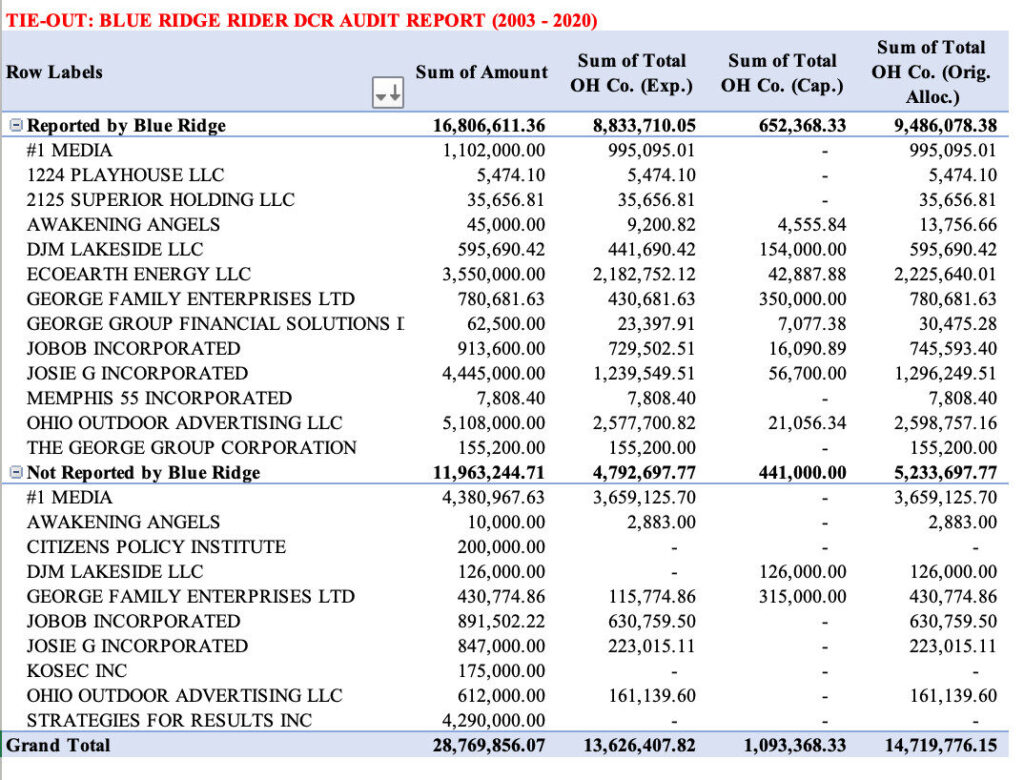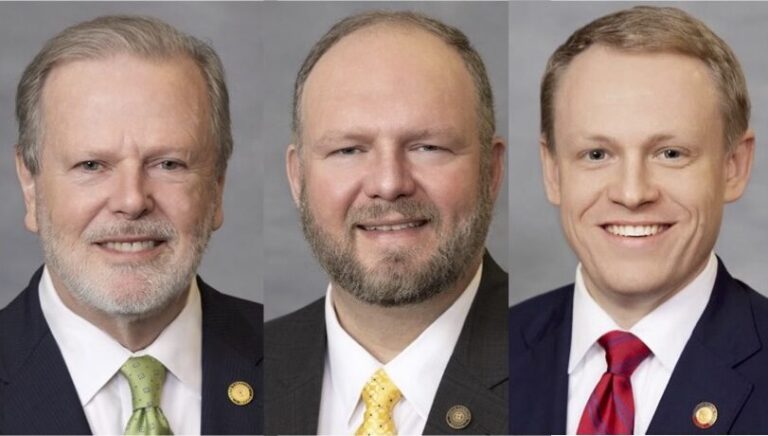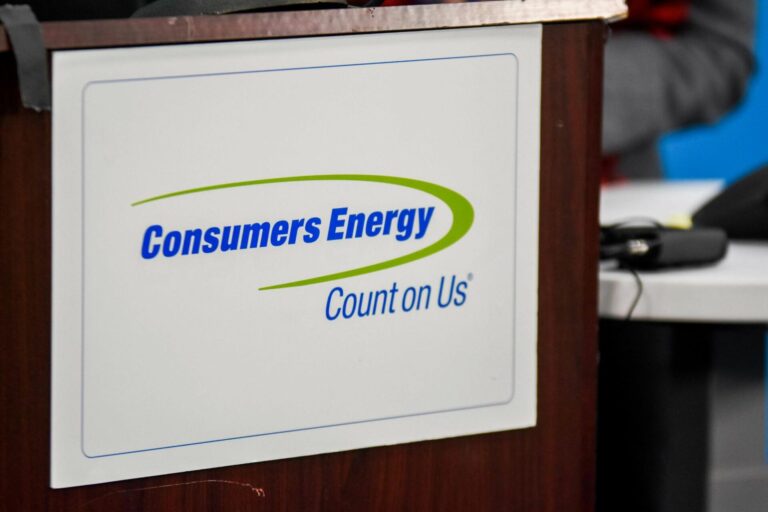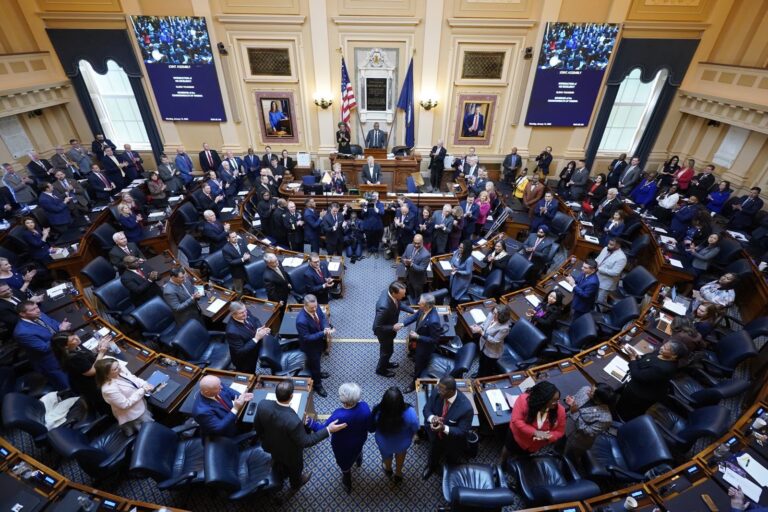FirstEnergy wants to make Ohio customers pay $108 million for its corporate accounting foul-up

FirstEnergy wants to add $108 million to the rates paid by customers of its Ohio utilities so the company can avoid taking a loss for a corporate accounting foul-up flagged repeatedly in audits by state and federal utility regulators.
A 2022 audit by the Federal Energy Regulatory Commission found that FirstEnergy’s subsidiaries may have mischarged customers for corporate overhead costs that the company’s utilities wrongly accounted for as capitalized construction-related expenses between 2015 and 2021. The misclassified corporate overhead costs included lobbying and advertising expenses, donations, and dues payments, as well as other labor and administrative and general expenses, according to the FERC audit.
Correct accounting of expenses by utilities matters because utilities are generally disallowed from including costs like lobbying and donations in regulated rates paid by ratepayers. Utilities are supposed to fund lobbying and donations with shareholder money because these expenditures primarily benefit shareholders and do not benefit ratepayers.
Utilities can recover the cost of other administrative and general expenses from ratepayers, but do not earn a profit on that spending. Utilities can earn a profit from ratepayers on their capital investments in the construction of infrastructure like power lines and power plants, which provides investor-owned utility companies like FirstEnergy with a financial incentive to maximize their spending on construction.
In testimony last year, FirstEnergy’s Assistant Controller Tracy Ashton described how the company’s Ohio utilities had reclassified $108 million in overhead costs “out of capital accounts” as a result of the FERC audit. Ashton said FirstEnergy was now requesting the Public Utilities Commission of Ohio’s permission to recover the $108 million from its Ohio customers. The request is part of a larger rate case before the PUCO, where FirstEnergy is seeking approval of a $190 million annual rate increase for its three Ohio utilities, Ohio Edison, The Illuminating Company, and Toledo Edison. FirstEnergy expects the PUCO to issue a decision in the rate case this month.
A 2025 audit report prepared for the PUCO in the rate case recommended that commissioners deny FirstEnergy’s request to recover the money from ratepayers.
“Based on the FERC audit, the Companies capitalized costs from 2015 through 2021 that would not have been eligible for recovery as plant in rate base in the current proceedings,” the independent audit report by Blue Ridge Consulting said. “The companies should not be allowed a return on and of an expense item by relabeling these costs as a deferred debit.”
The Ohio Consumers’ Counsel, which is representing the interests of residential utility customers in the rate case, concurred with Blue Ridge Consulting’s recommendation. If the PUCO accepts the auditor’s recommendation, more than $100 million will be removed from the rate base proposed by FirstEnergy’s Ohio utilities in the rate case.
FirstEnergy said in its annual 10-K report for 2024 that if it is unable to recover reclassified costs flagged by the FERC audit through rates, it could “have an adverse impact on FirstEnergy’s financial condition.”
FirstEnergy reported earning nearly $1 billion in profits last year.
Meanwhile, the PUCO is simultaneously hearing four separate but related cases involving the question of whether FirstEnergy’s Ohio utilities misused money from ratepayers for payments related to the utility company’s multi-million dollar House Bill 6 corruption scheme in Ohio.
FirstEnergy’s Ohio utilities misclassified a portion of a $4.3 million bribe payment as a capitalized construction expense
State and federal criminal investigations exposed how FirstEnergy paid millions of dollars in bribes in an attempt to secure over $1 billion in since-repealed ratepayer-funded bailouts included in Ohio’s 2019 energy law, House Bill 6.
A 2021 PUCO audit of FirstEnergy’s Delivery Capitalization Rider first revealed that the company’s Ohio utilities had accounted for portions of payments made to entities associated with several individuals involved in the H.B. 6 corruption scandal as capitalized construction costs. The 2021 audit, which was also conducted for the PUCO by Blue Ridge Consulting, recommended $7.45 million be excluded from rates in any future rate case filed by FirstEnergy.
A table included in a 2024 PUCO audit report by the accounting firm Marcum, LLP, which further examined political spending by FirstEnergy’s Ohio utilities in support of HB6, summarized the $7.45 million in capitalized expenses identified by the earlier Blue Ridge audit as follows:

The Ohio utilities capitalized $6.45 million in payments to the Sustainability Funding Alliance (SFA), a secretive consulting firm owned by energy lobbyist and attorney Samuel Randazzo, including a nearly $2.5 million portion of a $4.3 million bribe payment FirstEnergy made to Randazzo shortly before his appointment as PUCO chairman by Governor Mike DeWine in early 2019.
Randazzo was later indicted on state and federal criminal charges in connection with the secret payments from FirstEnergy. He committed suicide last year while awaiting trial.
FirstEnergy’s Ohio utilities capitalized over $300,000 in payments to Generation Now and Hardworking Ohioans, two dark money entities involved in the events leading to the federal criminal case against former Ohio House Speaker Larry Householder. Householder is now serving 20 years in prison after being convicted in a racketeering scheme involving $60 million in bribes paid by FirstEnergy. Generation Now pleaded guilty in the case.
The utilities also capitalized over $655,000 in payments to entities associated with Cleveland area businessman Tony George, who served as an intermediary between FirstEnergy and Householder.
The Marcum audit described the accounting problem at FirstEnergy as involving:
… certain H.B. 6-related costs were misallocated to the Ohio Companies and incorrectly recorded to FERC Account 923, Outside Services Employed, with a portion of those costs being subsequently and incorrectly capitalized to FERC Account 107, Construction Work in Progress. Both are Above-the-Line FERC Accounts; therefore, costs recorded to these FERC Accounts during the Audit Period had the potential to impact Ohio rates, riders, and other cost recovery mechanisms.
Chris Healey, Chief of the Accounting and Finance Division within the Rates and Analysis Department for the PUCO, provided a one-word response when asked if the PUCO’s staff did an independent investigation into whether any costs associated with H.B. 6 are included in the expenses FirstEnergy Ohio’s utilities are now trying to recover from customers in the ongoing rate case.
“No,” Healey said at a rate case hearing in May.
Audit working papers reveal new details about the corporate overhead costs that FirstEnergy’s utilities misclassified as capitalized construction expenses
The Energy and Policy Institute filed an Open Records Law request with the PUCO and obtained copies of the audit working papers and internal FirstEnergy records utilized in Marcum’s independent audit of FirstEnergy’s spending in support of H.B. 6.
A full collection of the audit working papers and the receipts the PUCO’s auditor obtained from FirstEnergy is made public here for the first time, and can be downloaded as a zip file by clicking here.
The audit working papers provide new details about additional payments to Tony George entities, as well as lobbying expenses, promotional sponsorships, FirstEnergy Foundation costs, and affiliate company payments that were misclassified as capitalized construction costs by FirstEnergy’s Ohio utilities.
PUCO audit reports omitted $441,000 in additional capitalized costs from FirstEnergy’s payments to Tony George entities
After Blue Ridge Consulting’s 2021 audit report on FirstEnergy’s Delivery Capitalization Rider (DCR) initially identified over $655,000 in payments to George entities that were capitalized by FirstEnergy’s Ohio utilities, Marcum’s audit team identified an additional $441,000 in George entity payments that the utilities classified as capitalized construction costs.
A spreadsheet titled “Tie-Out” included in a set of Marcum audit working papers, titled “WP02.02 – Payments to George Entities,” details how the Ohio utilities capitalized a total of over $1 million in George entity payments made sometime between 2003 and 2020:

The spreadsheet identified $315,000 in capitalized expenses that were not reported by Blue Ridge Consulting as going to George Family Enterprises, LTD, along with $126,000 that went to George’s DJM Lakeside, LLC.
Marcum’s public-facing audit report for the PUCO, however, made no mention of the additional $441,000 or the over $1 million total found in the working papers. The audit report by Marcum repeated Blue Ridge Consulting’s earlier finding that the utilities capitalized $655,814 in George entity payments.
At least one of FirstEnergy’s utilities in Ohio continued to do business with two George entities after Blue Ridge Consulting’s DCR audit report was made public in 2021. A list of property leased by Cleveland Electric Illuminating as of May 2024, which was filed in the ongoing rate case, included a warehouse owned by DJM Lakeside and the utility’s Midtown Service Center, which is located on a property owned by George Family Enterprises. The filing listed “Yes” for whether costs associated with leasehold improvements at the Midtown Service Center would be included in the utility’s rate base, if approved by the PUCO.
The Ohio utilities also capitalized a nearly $43,000 portion of a $400,000 FirstEnergy payment made to a George entity named EcoEarth in January of 2017, according to another spreadsheet marked “Data” found in Marcum’s George entities audit working papers.
Reporter Jake Zuckerman identified Tony George as the “Individual B” whom federal prosecutors alleged “directed FirstEnergy Service Executive 1 to alter a document relating to the $400,000 payment” in their indictment of FirstEnergy’s former CEO Charles Jones and top lobbyist Michael Dowling. Zuckerman also identified “FirstEnergy Service Executive 1” from the indictment as Dennis Chack, a former senior vice president who was fired by FirstEnergy in 2020, in part for falsifying information about a $400,000 company payment to EcoEarth during the federal investigation.
Over $625,000 in lobbying expenses were capitalized by FirstEnergy’s Ohio utilities, and some of that money was also omitted from a PUCO audit report
In its public-facing audit report on FirstEnergy’s spending in support of HB 6 for the PUCO, Marcum stated that the Ohio utilities capitalized $210,279 in “Misclassified Ohio Lobbying Labor Costs” during the time period covered by the audit, which the PUCO had limited to 2017 to 2019.
A table marked “Rates Analysis” found in working papers from Marcum’s audit, titled “WP03.01 – Internal Lobbying Labor Costs – Redacted,” included a higher total, $428,127, for employee lobbying labor costs included in capital for recovery from ratepayers by the Ohio utilities over a longer time period from 2015 through the first quarter of 2022.
In other words, the PUCO’s independent auditor had access to data on the portion of FirstEnergy’s total employee lobbying spending that was capitalized by FirstEnergy’s Ohio utilities for 2015 through March of 2022, but less than half of that total capitalized spending was included in the auditor’s final public facing audit report due to the PUCO’s decision to limit the scope of audit to 2017 to 2019.
$204,414.61 of the capitalized employee lobbying labor payments was attributed to money paid to FirstEnergy’s former Vice President of State and Local Affairs, Joel Bailey, in a “Summary” spreadsheet found in the “WP03.01 – Internal Lobbying Labor Costs – Redacted” working papers.
Bailey was separated from FirstEnergy in 2021 for his involvement with Householder and two of the dark money groups, Generation Now and Partners for Progress, involved in the federal criminal investigation. The reasons for Bailey’s separation were listed in a deposition aid prepared by FirstEnergy lawyers for the deposition of Joseph Storsin, a Vice President for the utility company, in a civil lawsuit filed by shareholders after the value of FirstEnergy’s stock fell following Householder’s arrest. Bailey was granted immunity from state prosecution for his testimony earlier this year in the PUCO’s H.B. 6 cases.
FirstEnergy’s Ohio utilities also capitalized over $100,000 in ancillary lobbying expenses, including pensions, IT, office space, and communications in 2015-2021, according to Marcum’s “WP03.02 – Internal Lobbying Ancillary Cost – Redacted” audit working papers.
Marcum’s public audit report mentioned only the approximately $49,000 that the Ohio utilities capitalized during the audit period of 2017-2019.
“…in 2021, the Ohio Companies began allocating a portion of capitalized overhead costs to grid modernization projects,” Marcum found in its audit report. “It is our understanding that this change in methodology caused Rider AMI to be impacted by capitalized internal lobbying costs after the Audit Period.”
The utilities told Marcum that refunds, with interest, were provided to customers who were mischarged for the capitalized internal lobbying costs included in the Advanced Metering Infrastructure Rider between 2021 and May 2024.
A spreadsheet marked “Rates Analysis” found in another Marcum audit working papers, titled “WP04.03 – External Lobbying Cost Analysis,” shows the Ohio utilities also accounted for nearly $100,000 in external lobbying payments as capital for recovery.
Another spreadsheet, “Impact to OH (Ext Lobbying),” found in the same working papers, shows the Ohio utilities capitalized a $22,000 portion of a $110,000 FirstEnergy payment to a mysterious entity named Ohioans for Effective Government LLC.
An associated invoice was dated in late October of 2018 and listed a Maryland address for Ohioans for Effective Government. Marcum described the invoice as vague and said it was approved by Bailey in a research summary included in the external lobbying working papers.
“The Ohio Companies were unable to provide any additional supporting documentation to shed light on the purpose of the 2018 contribution,” Marcum’s public audit report said.
Smaller portions of external payments FirstEnergy made to Democratic and Republican 527 political groups were also capitalized by the Ohio utilities, including portions of payments to the Democratic Attorneys General Association, Democratic Governors Association, Republican Attorneys General Association, and Republican Governors Association. The utilities also capitalized portions of external payments to the Ohio Republican Party, political consultant Rex Elsass, and a lobbying firm called The Success Group.
Over $970,000 in sponsorships, FirstEnergy Foundation expenses, and affiliate company payments were capitalized by the Ohio utilities
Also accounted for as capital for recovery by FirstEnergy’s Ohio utilities was over $300,000 in small sponsorship costs from 2015 through March of 2022, according to a table found in the “Rates Analysis (2)” tab of Marcum’s “WP02.05 – Other Transactions – Redacted” working paper. $215,000 in International Soap Box Derby sponsorship costs were capitalized, along with nearly $46,000 in money paid to the Firestone Country Club. The Ohio utilities also capitalized $2,000 paid to GOPAC Inc., a Republican 527 group, and $1,200 to a Democratic 527 group called New Jerseyans for a Better Tomorrow.
A table titled “FE Internal Review Related Capitalized Costs” found in the final tab in Marcum’s “Other Transactions” working paper listed over $330,000 in FirstEnergy Foundation “Labor & Ancillaries” costs capitalized by the Ohio utilities.
The same table listed over $340,000 in “FE Products” costs capitalized by the Ohio utilities. A 2021 PUCO audit of FirstEnergy’s compliance with Ohio’s corporate separation rules described FirstEnergy Products as a business unit of the FirstEnergy Service Company “which sells third party services and products to utility customers.”
“… Ohio’s corporate separation rules are designed to prevent any cross-subsidization between affiliates of a regulated utility,” the same PUCO audit noted.
The corporate separation audit also found the Ohio utilities were in “minor non-compliance” with “requirements related with sharing of facilities/services and in cross-subsidization across affiliates…”
No comment from FirstEnergy
A spokesperson for FirstEnergy did not respond to an email requesting comment for this article from the Energy and Policy Institute on the reclassified corporate overhead costs the company’s Ohio utilities are now seeking to recover from ratepayers in the ongoing rate case. The email asked if those costs include any money paid to Randazzo, Householder, and George entities, or the lobbying expenses, sponsorships, FirstEnergy foundation costs, and payments to FirstEnergy Products that the utilities previously misclassifed as capitalized construction costs.
The $108 million is part of a larger accounting foul-up involving FirstEnergy’s other subsidiaries
The $108 million in misclassified corporate overhead costs that FirstEnergy Ohio’s utilities are now seeking to recover from Ohio ratepayers is part of a larger accounting problem that extends to FirstEnergy’s other subsidiaries. Those other subsidiaries include electric distribution utilities with rates regulated by state public utility commissions in Maryland, New Jersey, Pennsylvania, and West Virginia. They also include interstate transmission companies with wholesale transmission rates that are regulated by FERC.
The FERC audit found that between 2015 and 2021, FirstEnergy’s subsidiaries improperly capitalized corporate overhead expenses to Account 107.
The Uniform System of Accounts established for utilities by the Federal Power Act defines Account 107 as reserved for “Construction Work in Progress,” or expenditures related to electric plant construction that’s in progress.
According to FERC’s audit report:
The evaluation included an assessment of labor, related A&G, and other costs that were accounted for as capitalized overhead construction cost on the FirstEnergy subsidiaries’ books. Labor, related A&G, and other costs capitalized included employees’ base salaries, overtime wages, pension and other benefit expense, payroll taxes, annual incentive plan payments, employee expenses, materials and supplies, outside contractor costs, advertising expenses, donations, dues and subscription costs, lease/rental payments, and insurance expenses.
A footnote to that section of the FERC audit report said that, “FirstEnergy subsidiaries’ A&G capitalization included other costs such as lobbying expenses and donations, which were improperly classified as A&G expenses.”
“From 2015 through 2019, the First Energy subsidiaries capitalized $575.5 million of overhead labor and related A&G costs to construction projects,” FERC’s audit report also said.
“The FirstEnergy subsidiaries continued the capitalization practices in 2020 and 2021, adding additional amounts of A&G expenses to capital construction projects,” the audit noted.
A portion, $26.5 million, was for customer service costs that were capitalized, even though FERC found they “lacked a definite relation to construction and thus the associated costs were not appropriately capitalizable as a cost of construction.”
FirstEnergy received a draft of FERC’s audit report in August of 2021, according to an internal summary from a meeting of FirstEnergy’s Audit Committee that took place the following month. The meeting summary, marked as confidential, is among the records the Ohio Consumers’ Counsel obtained from FirstEnergy through discovery in the PUCO’s HB 6 cases, and released in response to public records requests.
“There is additional risk that FERC could require write-off of prior overhead capitalized costs, however, certain transmission companies were on formula rates (expect to recover as expense costs then) and states have jurisdiction on recovery of the distribution companies costs,” the meeting summary said, citing comments made by FirstEnergy’s Controller Jason Lisowski.
“Based on the relevant facts and circumstances, FirstEnergy respectfully requests that changes to capitalization rates and revised procedures should be applied prospectively only,” FirstEnergy said later in its response to FERC’s audit recommendations in 2022.
FirstEnergy said in its annual 10-K report for 2023 that its electric distribution utilities were “in the process of addressing the outcomes of the FERC Audit with the applicable state commissions and proceedings, which includes seeking continued rate base treatment of approximately $310 million of certain corporate support costs allocated to distribution capital assets.”
In New Jersey, as a result of a rate case settlement last year, the FirstEnergy utility Jersey Central Power & Light was disallowed from recovering $53 million “associated with certain corporate support costs recorded to capital accounts from the FERC Audit,” FirstEnergy said in its annual 10-K report for 2024.
FirstEnergy also noted in its 2024 10-K that the Maryland Public Service Commission had “denied recovery of approximately $12 million in rate base associated with certain corporate support costs recorded to capital accounts resulting from the FERC Audit.”
In its order, the Maryland Public Service Commission echoed testimony that Steven Hunt, a witness for the state’s Office of the People’s Counsel, delivered in a rate case for the FirstEnergy utility Potomac Edison.
“The Commission is not bound to endorse an accounting error it did not previously approve,” Hunt had testified.
“We agree,” the Maryland Public Service Commission said in the order.
FERC continues to investigate FirstEnergy’s efforts to recover the reclassified overhead costs through formula transmission rates, FirstEnergy said in a quarterly 10-Q report last month.
“If the FERC Office of Energy Market Regulation and the FERC Office of Enforcement were to successfully challenge the recovery of the 2022 reclassified operating expenses and formula transmission rates it could have a material adverse effect on FirstEnergy financial conditions, result of operations, and cash flows,” the quarterly report acknowledged.
Looking beyond the PUCO’s pending decision in FirstEnergy’s Ohio rate case, questions about the reclassified corporate overhead expenses FirstEnergy is trying to recover from Ohio ratepayers could arise again in February, when the PUCO will hold an evidentiary hearing in the case where it’s reviewing the utilities’ spending in support of HB 6.
Top Photo by Tracy O is from WikiMedia Commons. Creative Commons Attribution-Share Alike 2.0 Generic



